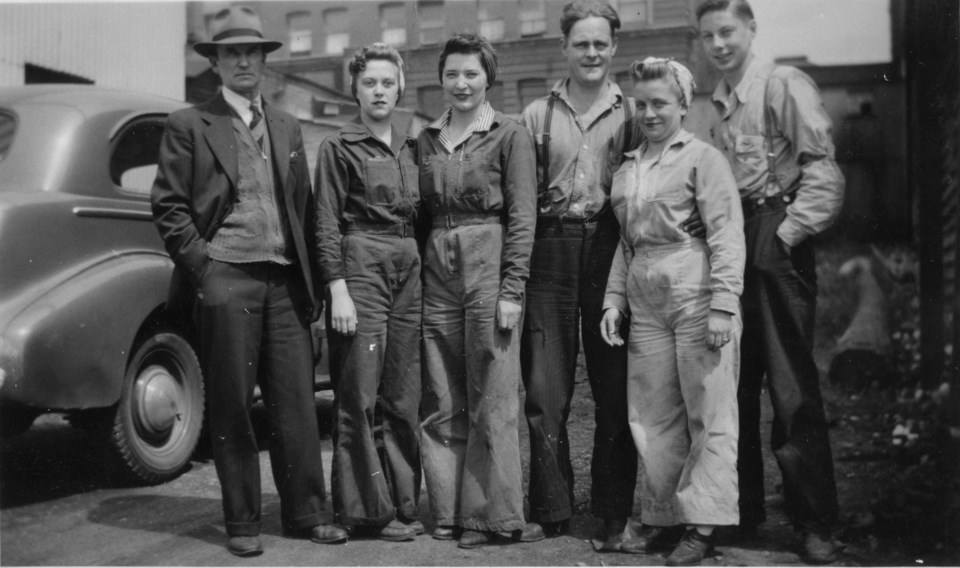Here is a picture of a group of Burrard Dry Dock employees taken in 1945. The women pictured are donning the now iconic outfit of the women wartime worker.
Central to this was the headscarf. Headscarves were essential for safety in industrial worksites as they kept women’s hair free of machinery, but also differentiated the women from their male counterparts who usually donned caps.
As a representation of femininity in the workplace, the headscarf soon became an essential feature of women’s war work propaganda, firmly enmeshing it as a long-lasting symbol of women’s contributions to the Second World War effort.
Visit the MONOVA website for more information about the history of the North Shore and to plan your visit to MONOVA: Museum of North Vancouver, now open at 115 West Esplanade in The Shipyards.
Currently, MONOVA: Archives of North Vancouver, at 3203 Institute Road in Lynn Valley, is open for drop-ins on Monday and by appointment Tuesday-Friday, 12:30-4 p.m. Contact: [email protected]
Navigate culture on the North Shore by using the North Shore Culture Compass.



